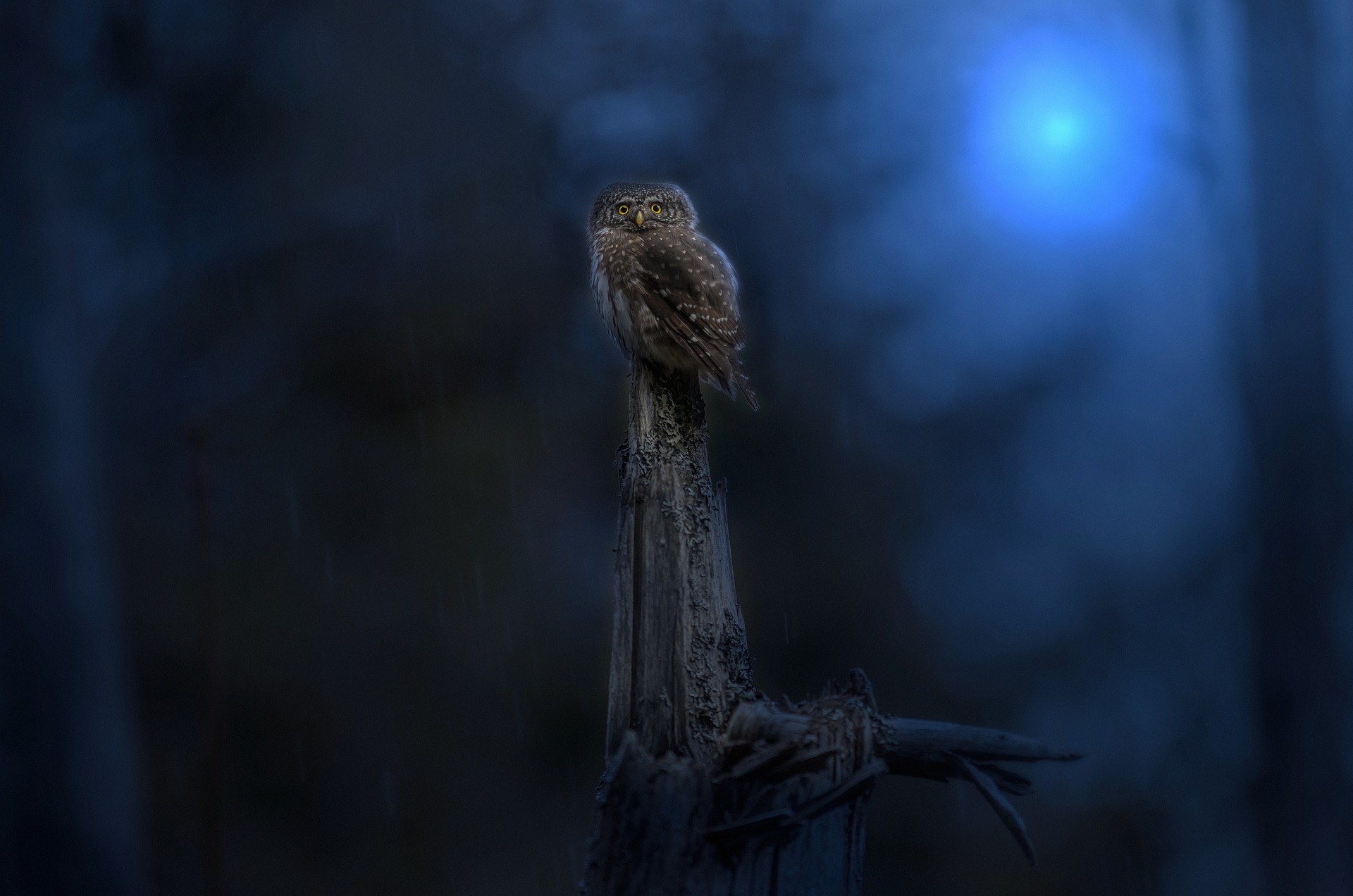The Eurasian Pygmy Owl (Glaucidium passerinum) is one of the smallest owl species in Europe and Asia, belonging to the family Strigidae. Here’s some information about this fascinating bird:
- Appearance: The Eurasian Pygmy Owl is small, measuring about 15 to 19 centimeters (6 to 7.5 inches) in length, with a wingspan of around 30 to 35 centimeters (12 to 14 inches). It has a rounded head with distinctive white spots on its dark brown or grayish plumage. Its eyes are yellow and it has a short tail with barred markings.
- Habitat: Eurasian Pygmy Owls inhabit a variety of forested habitats, including coniferous and mixed forests, woodlands, and mountainous regions. They are typically found in areas with dense vegetation and plenty of prey.
- Distribution: This species has a wide distribution across Europe and Asia, ranging from Scandinavia in the west to Japan in the east. It is found in countries such as Russia, Finland, Sweden, Norway, Estonia, Latvia, Lithuania, Poland, Germany, and parts of central Asia.
- Diet: Eurasian Pygmy Owls are carnivorous and primarily feed on small birds, rodents, insects, and other small vertebrates. Despite their small size, they are skilled hunters and are known to take down prey larger than themselves.
- Behavior: Eurasian Pygmy Owls are primarily crepuscular or nocturnal, meaning they are most active during dawn, dusk, and nighttime. They are solitary birds and often perch in dense foliage, using their camouflage to blend in with their surroundings while hunting.
- Reproduction: Breeding season for Eurasian Pygmy Owls typically occurs in the spring, with pairs forming monogamous bonds. They nest in tree cavities, old woodpecker holes, or abandoned nests of other birds. The female lays a clutch of eggs, usually ranging from 3 to 7 eggs, which she incubates while the male brings food to the nest. After hatching, both parents participate in feeding and caring for the young until they fledge.
- Conservation: Eurasian Pygmy Owls are not considered globally threatened, although populations may be declining in some regions due to habitat loss, fragmentation, and human disturbance. Conservation efforts aimed at preserving mature forests, protecting nesting sites, and reducing human disturbance can benefit Eurasian Pygmy Owl populations.
Overall, the Eurasian Pygmy Owl is a charismatic and elusive owl species appreciated by birdwatchers and nature enthusiasts for its small size, distinctive appearance, and intriguing behavior.
Views: 9
Subscribe to the newsletter:
